Toyota Aurion News

Fined for winding back clock
Read the article
By Staff Writers · 16 Sep 2013
Jimmy Iskandar, from Casula, has been ordered to pay $31,762 by Parramatta Local Court for odometer tampering and other offences. The cars were bought from licensed car dealers, private sellers and auction houses, and were tampered with as follows:• On 12 February 2010, Iskandar purchased a 2004 Mercedes-Benz E320 sedan for $30,000. The odometer reading at the time of purchase was 210,000 kilometres. He subsequently sold the car with the odometer reading showing at 91,000 kilometres.• On 15 February 2010, Iskandar purchased a 2006 Toyota Aurion AT-X sedan for $16,990. The odometer reading at the time of purchase was 191,244 kilometres. On 29 March 2010, he sold the motor vehicle to Rana Motors Pty Ltd with the odometer reading 149,520 kilometres.• On 19 August 2010, Iskandar purchased a 2006 Toyota Camry Altise sedan for $6,000. The odometer read 152,153 kilometres but on 27 January 2011, he sold car privately with an odometer reading of 88,580 kilometres.• On 29 August 2010, Iskandar purchased a 2006 Toyota Camry Altise sedan, with an odometer reading of 170,000 kilometres, for $8,000. The same day he sold the motor vehicle to Rana Motors Pty Ltd with an odometer reading of 55,723 kilometres.• On 9 November 2010, Iskandar purchased a 2008 Toyota Camry Altise sedan from Hertz Australia Pty Ltd for $14,000 with an odometer reading of 68,826 kilometres. At the time of the sale in January 2011, the odometer reading was at 35,059 kilometres.• On 5 January 2011, Iskandar purchased a 2007 Toyota Camry Altise sedan for $9,000. The odometer at the time of purchase was 149,750 kilometres but when sold, the odometer had been wound back by more than 100,000 kilometres.• On 15 February 2011, Iskandar purchased a 2006 Toyota Camry Altise sedan from Rana Motors Pty Ltd for $8,000 with an odometer reading of 121,429 kilometres. Two months later he sold the car for double the price with an odometer reading of 46,118 kilometres.• On 14 April 2011, Iskandar purchased a 2007 Toyota Aurion Sportivo sedan with an odometer reading of 155,709 kilometres. On 9 August 2011, he sold the car with a reading of 55,944 kilometres.• On 13 May 2011, Iskandar purchased a 2007 Toyota Aurion Prodigy sedan from Highway Car Sales for $14,000. The odometer reading at the time of purchase was 140,105 kilometres. Four months later he sold the car for $15,000, using his business card with an expired wholesalers’ licence number. The odometer had been wound back by over 90,000 kilometres.• On 9 August 2011, Iskandar purchased a 2005 Toyota Tarago GLi van for $11,000 with an odometer reading of 177,623 kilometres. Two months later he sold the van for $20,000 with an odometer reading of more than half the figure.• On 18 September 2011, Iskandar purchased a 1997 Toyota Tarago GLi van for $4,000 and sold it two months later for $4,500. The odometer discrepancy was more than 48,000 kilometres.• On 17 December 2011, Iskandar purchased a 2005 Toyota Tarago GLi van. The following month he sold the van for $1,500 more to a church group, with the odometer reading reduced by almost 60 per cent.• On 15 February 2012, Iskandar purchased a 2007 Toyota Camry Ateva sedan for $10,000 with an odometer reading of 153,148 kilometres. He subsequently advertised the sedan for $15,500 with an odometer reading of 59,000 kilometres.Fair Trading Commissioner Rod Stowe said it was fortunate for Mr Iskandar that such offences do not attract a prison sentence.“While Mr Iskandar pleaded guilty in court, unfortunately he did not make the same admissions to his hapless clients and he stood to make a significant amount of money from his duplicity in the process,” he said. “Odometer tampering is a serious offence and poses a significant detriment to the consumer.’’
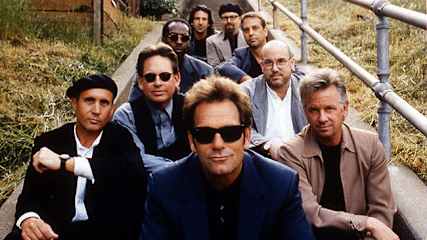
Toyota eyes the hit charts
Read the article
By Paul Gover · 15 Aug 2013
Toyota is aiming for another number one in Australia. But it's not the one you might think. Not content with its long-term top ranking for showroom sales, and the number one spot occupied by the Corolla in sales through to July 2013, it's now aiming for a number one song.Brand T is putting its marketing muscle behind the Huey Lewis song 'Hip to be Square', which is the backing track for its new Camry and Aurion commercial. The television spot is flooding the airwaves and Lewis is moving back up the ARIA charts, more than 25 years after it hit for the first time.There's a good chance the aging rocker could join his song in Australia if 'Hip to be Square' continues to chart, although Toyota is making no promises on backing a tour.But it is happy to have re-discovered its mojo and the same approach that made commercials with the Camry Chicken so successful in the 1980s."There is a wry humour, but also a connection with the customer. As you could imagine, it was a risky concept. We could have stuffed it up without trying too hard, but we didn't," the new sales and marketing boss at Toyota Australia, Tony Cramb, tells Carsguide.The idea behind the new television spot is to promote Toyota's locally-made cars by appealing to the people who need them most - families - but with a twist towards dads. There is even a shot that takes its direction from the 'Parenthood' movie."The thing I love is that there's a confidence in the ad. The creative came from Saatchi & Saatchi and it's inherently Australian.""There is a new spirit within Toyota. And I think it's driven by the product. There is an infectious spirit, and it's global. It's the direciton of the company, and the way we want to be."Cramb says the new direction comes right from the top, company chief Akio Toyoda, and is best reflected in the top selling 86 sports car. The cute coupe has just celebrated its first birthday with more than 6000 deliveries in Australia and a waiting list that's still up to six month.But Huey is focussed on the Camry and the news is all about boosting sales of the local hero at a time when the Ford Falcon is in critical decline and Toyota and Holden are fighting for survival beyond 2016. "The ad celebrates local manufacturing. The song itself was chosen because it's so catchy and exciting and vibrant," says Cramb."But, at the same time, it appeals to people in that age group and in that stage of their life. If you think about the words, it resonates as well." He promises more fun from Australia's number one brand, but nothing arrogant."We're definitley not taking ourselves too seriously. You'll definitely see more of this sort of stuff," Cramb says.This reporter is on Twitter: @paulwardgover
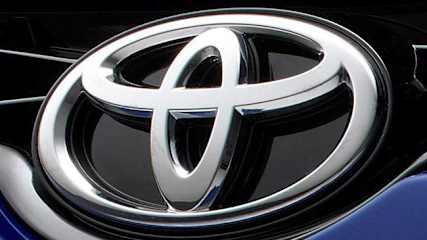
Toyota Australia posts $149.1m profit
Read the article
By Joshua Dowling · 11 Jun 2013
Toyota Australia has posted its first profit in four years, the only one of the three local car-makers to finish its latest financial year in the black.
The company reported a profit of $149.1 million after tax -- but the gain was wiped out by the previous three years of losses totaling more than $150 million.
It was Toyota’s best financial result since the Global Financial Crisis and the third-highest on record in Australia.
The profit was buoyed by imported vehicles given Toyota reportedly loses more than $2500 on each car it makes locally. More than 80 per cent of Toyota Australia’s sales come from overseas models.
The HiLux utility -- which accounts for almost a quarter of Toyota Australia’s imported vehicles and was the top-selling vehicle for six months in 2012 -- is not subject to an import tariff because it comes from Thailand, which has a Free Trade Agreement with Australia.
The $72 million Toyota Australia received in taxpayer assistance over the 12 months to the end of March 2013 (the Japanese financial reporting period) almost equaled the tax it paid on its latest profit ($220.9 million before tax).
Defending its request for ongoing government assistance Toyota Australia spokeswoman Beck Angel told News Limited: “Each year we inject around $1.5 billion into the local economy because of our manufacturing presence, including wages, local suppliers and taxes.
“This means that last year, for every $1 received from the government we spent more than $20 in Australia in connection to local manufacturing. If we do not build vehicles in Australia, this money may be spent in other countries.”
Toyota has accepted about $1.2 billion in taxpayer assistance over the past 12 years, which is marginally more than Ford ($1.1 billion) and significantly less than Holden ($2.17 billion) over the same period. But Toyota employs more factory workers, builds more cars and exports more vehicles than both Holden and Ford.
Over the past 12 years Toyota has posted an average annual profit of $68 million from a turnover of $8 billion, compared to Holden’s $28 million profit from an annual average turnover of $5.5 billion.
Ford has made a loss of $25 million each year from an annual average turnover of $3.3 billion over the same period. In the past five years alone Ford says it has lost $600 million, and this is what drove its decision to shut its Australian factories in 2016.
Toyota says it plans to retain its local manufacturing operations despite its mounting losses from vehicle assembly.
“Factors such as the high Australian dollar and intense market competition have had a negative impact on local manufacturing, however we are doing everything we can to strengthen our business,” the spokeswoman said. “It is our intention to continue manufacturing in Australia. We are now 15 months into a five year transformation to strengthen our business and are making progress, as demonstrated by our financial results.”
Toyota has just refurbished its engine factory and hired 140 part-time factory workers on a six-month contract to help the company handle an increase in export demand for its Altona-made Camry sedan.
But the Federal Government is facing renewed funding pressure from Holden. General Motors’ Australian outpost had announced it was here to stay in 2022 following last year’s $275 million taxpayer assistance deal.
However, Holden has since renewed concerns about the Coalition’s plan to cut $500 million in funding to the car industry if it were to win the Federal election in September.
In the wake of a meeting between the car industry and state and federal governments in Melbourne last Friday, a Holden spokesman repeated the company’s earlier fears over any possible funding cuts. “If it zeros out, we will cease manufacturing,” the spokesman said.
Last month, after Ford announced its Australian factory closures, the boss of Holden Mike Devereux warned: “The industry needs swift action to make Australia’s automotive policy settings clear, consistent and globally competitive as quickly as possible” given the “historically significant economic challenges facing the entire country”.
After the Premier of South Australia Jay Weatherill threatened to pull its $50 million contribution to Holden’s 2022 plan, Devereux said: “We will need a review at the federal level of the conditions that the country is facing right now. Those conditions have changed quite dramatically, not just in the last five six months but the last year. We’re going to continue negotiating the terms of that agreement.”
This reporter is on Twitter: @JoshuaDowling

What is Australia's car future
Read the article
By Paul Gover · 30 Nov 2012
The $19,990 bottom line for the upcoming Nissan Pulsar is exactly the same showroom sticker the car wore in 1996. If you think about inflation through that time - if you need a reminder, just take a look at the pump numbers rolling around the next time you're at the bowser - and all the extra equipment that now runs to standard aircon, electric windows and the rest, that's a mighty fine bottom line.But the same time hasn't been as kind to Australia's local carmakers. Ford, Holden and Toyota have all been badly hit by sagging demand for their local heroes, raising doubts about the same fatal flaws that forced Nissan and Mitsubishi to close their local operations.There have already been significant job losses during 2012, with Ford and Holden only committed to their production lines until the end of 2016 and Toyota also looking for a better business plan beyond the life of the current Aurion and Camry.There is a lot of backroom work going into cementing a future for the local makers and, even more importantly, the component makers who rely on them to provide the business foundations that keep thousands of people in jobs and new technology flowing into Australia. Holden chief Mike Devereux went public - again - with his concerns this week.It's easy to think that he's just rattling the begging bowl again and that the cash cow in Canberra has been milked dry by an industry that does not deserve to survive. Why should we be paying giant subsidies to an inefficient industry? But I know, after talking to Devereux's opposite numbers at Ford and Toyota, that his concerns are real. If these companies are going to remain in Australia for the long term, their parents in the USA and Japan expect co-investment cheques from the government.After all, do we really think that Thailand became the assembly line for Asia - with factories churning out Toyotas and Fords, Nissans and Hondas and Holdens - without significant government support? Devereux is calling for both sides of Federal politics to declare their policy for the motor industry so voters can consider their position ahead of next years election."I believe 2013 will be the year that Australian decides whether it wants an auto industry or not," Devereux says bluntly. "I just want to sell cars, I don't want to be part of the political debate in this country. "(But) I need to understand very clearly, in a forward looking sense, what each party's policy is on auto manufacturing. Are they committed to making things in this country?"All the numbers say that manufacturing cars makes no sense. But if we send Ford, Holden and Toyota packing by refusing to support their businesses, Australia looks more and more like nothing more than a giant hole in the ground that's only good for supplying raw materials to China. Where, incidentally, they're preparing the next wave of cheap imported cars for Australia.
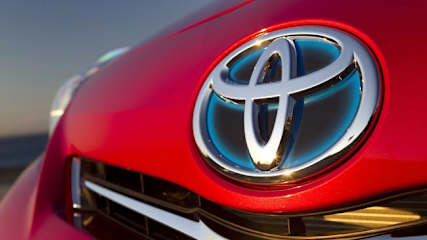
Toyota guarantees resale value
Read the article
By Neil Dowling · 08 Nov 2012
Its latest car finance deal guarantees the resale value of the car when the loan term ends. Called Toyota Access, it is claimed to be an affordable and flexible way to buy a new car.It works as a standard loan with Toyota Finance but the zinger is the zero - that's 0 - per cent finance rate on the Australian-built models: Camry, Camry Hybrid and Aurion. The comparative interest rate on other Toyota models is only 1.9 per cent.At the end of the three year loan term, and after paying a set monthly repayment, there is a “guaranteed future value”. This amount is similar to a balloon payment on any lease. The difference is that Toyota guarantees - before the customer enters the contract - to buy the car back at that price.In the attached example, the Toyota Camry Altise costs $28,998 including on-road costs in NSW. This price may change dependent on price differences and the state where the car is registered. The guaranteed buy-back is $11,824 in this example - dependent on the car's condition and distance travelled.This compares with the 48 per cent industry residual value of the Altise after three years which is estimated at $13,920 - a figure that may apply if the customer chooses to sell the car privately. That indicates that the car may sell for more than what Toyota wants back, so the difference may end up in the customer's pocket.But a few extra dollars at the end of the deal may not be the only attraction. It's also flexible. The customer can switch out of the car at the end of the term into another Toyota-financed car and if - as the example here - the old car is worth more than the guaranteed future value (GFV). Or the car can be handed back to the Toyota dealer - probably without incurring a cost - or the customer can pay the GFV and own the car outright. In this case, the car could be sold privately and they could then pocket the difference.Along the way, the car is covered by Toyota's capped-price service program so the customer has a predictable thread of costs for the ownership of the vehicle. Toyota Australia's executive director sales and marketing Matthew Callachor says Toyota Access is available on all new Toyota vehicles. “It guarantees that the resale value of the Toyota will never be less than the final payment, totally removing any risk of being out of pocket,” he says.The monthly repayments are fixed and dependent on the vehicle chosen and its driveaway price. “Customers may be able to upgrade their choice of vehicle, or add extras like accessories and even purchase a brand-new model more often,'' Mr Callachor says.“One of the great concerns highlighted by our customer surveys is that, at the end of the finance term, the amount owing might be more than the value of the car. With Toyota Access, we have set out to eradicate that concern.” He says the program appeals to owners who want the flexibility to update their Toyota to suit their changing circumstances.If, for example, a customer wants a bigger Toyota as their family grows, they can update more easily,” he says. “For most people, family planning and financial planning go hand in glove. Until now car finance hasn't necessarily been part of that consideration. Now it can be.''EXAMPLEToyota Access on a Camry Altise:Drive-away Price - $28,990 (NSW example and price may be slightly different for other states)Amount Borrowed - $28,998 (there is a $7.50 “security registration fee”)Comparison Rate - 0%Loan Term - 36 monthsMinimum Guaranteed Future Value - $11,824 (conditions regarding distance travelled and vehicle condition will apply)Monthly Finance Repayment - $491
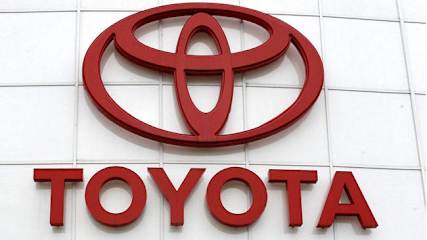
Toyota recalls close to 300,000 cars
Read the article
By Neil Dowling · 10 Oct 2012
Toyota Australia says the recall -- from a 7.4 million global batch -- affects Corolla, Kluger, RAV4, Yaris, Aurion and Camry vehicles built between 2006 and 2010.The recall is to replace the electric window master switch, located on the driver's armrest. There have been six cases reported in Australia from a total of 297,931 vehicles specified by Toyota Australia. Globally 7.4 million vehicles are impacted.It says the problem is that the switch doesn't operate smoothly and has a "sticky feel". "This is due to the non-uniform application of lubricating grease resulting in wear to the internal sliding contact points,'' it says in a recall notice. "In some instances, the switch may become inoperative.''In a further warning, Toyota Australia spokesperson Beck Angel says if a lubricant has been applied to the switch in an attempt to rectify this operation, "the switch assembly may overheat and melt''. "This recall is a precautionary measure,'' she says."The switch will be checked mechanically and electrically for correct operation and specialised electrical grease will then be applied to ensure it operates smoothly when pressed.'' Only a small number of vehicles will require the window's electrical circuit board to be replaced."The inspection and any required repairs will take approximately one hour to complete and will be at no cost to the owner,'' Ms Angel says. "Depending on the dealer's work schedule however, the car may need to be available for a longer period of time."Should Toyota owners experience sticking operation of the power window master switch, we recommend that the switch is no longer used prior to vehicle inspection and repair.'' Ms Angel would not put a figure on the cost of the recall to Toyota.Toyota will start a mailout to owners of affected vehicles at their last known address from mid-November asking them to make an appointment with their preferred Toyota dealer. For further information about the recall, customers can call Toyota on 1800 987 366.The recall is not Toyota's for 2012 - fears over fuel leaks and potential fire risk has forced a recall in August of nearly 20,000 Australian-built Camry and Aurion vehicles to fix a wrinkled fuel line in the engine bay.
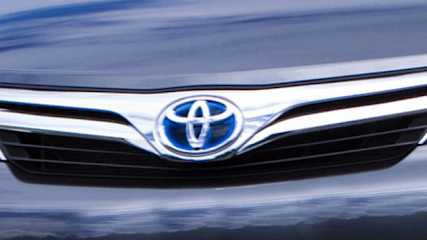
New car sales price Toyota Camry and Aurion
Read the article
By Craig Duff · 09 Oct 2012
Appealing to our national identity to support local product is the Toyota’s latest lure to entice buyers into showrooms.
Toyota is pushing the “buy Australian” line with a 0 per cent finance deal on its locally assembled Camry, Camry Hybrid and Aurion sedans. Camry sales are still more than solid, with the sedan accounting for almost one in three cars sold in the mid-sized market. The Aurion, though, is being hammered by the move away from large sedans and sales are down 23 per cent so far this year.
Toyota's executive director sales and marketing Matthew Callachor says the finance offer is an extension of the company's Local Pride advertising campaign, which features staff from the Altona production line in Melbourne’s west extolling the virtues of the vehicles.
"Zero per cent (finance) is a way to encourage Australians to rediscover the value and other attributes of cars we build here," Callachor says.
"Over many years, we have exported several times more Australian-built Toyota cars than we sell locally. Our long-term aim is to shift this balance closer to 50:50. We are supporting that objective by reminding local motorists that Camry and Aurion are built by Australians for Australians."
Toyota built 96,618 cars at the plant last year, most of which were exported and will open a new $330 million engine facility in Victoria later this year to build the 2.5-litre four-cylinder engines that power the Camry range.
The financial promotion is a means of offsetting the continued strength of the Aussie dollar, which effectively gives importers a default discount on their vehicles.
Toyota isn’t the only carmaker with a 0 per cent finance deal. Renault and Nissan are pushing the interest-free loan on a three-year term for selected models. Kia and Mitsubishi are both touting 0.9 per cent finance and Honda has a 1.5 per cent rate on the Civic hatch.
LOCAL VEHICLE PRODUCTION
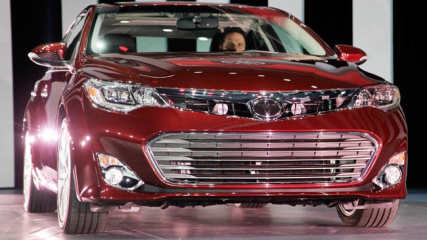
Toyota Avalon not as good as our Aurion
Read the article
By Glenn Butler · 10 Apr 2012
Toyota’s new large, front-drive sedan is not for Australians, and that's a good thing.Toyota USA took the wraps off the 2013 Toyota Avalon at this week’s New York Auto Show. Toyota USA spokesman Bob Carter said the new Avalon is more refined, more spacious, more technically advanced and more dynamically competent than the seven-year old model it replaces.But, before Toyota-philes get too excited, we should tell you up front that the fourth-generation Avalon will not come to Australia. Even though Toyota did build the (second-gen) Avalon in Port Melbourne from 2000 to 2006, Toyota Australia abandoned the Avalon program to develop the Aurion large sedan off the Camry platform.But still, we thought you’d like a look at the Avalon we ‘could’ have had, although any suggestion we’d be better off with this one is a long bow to draw, especially in light of the Avalon’s struggles in the USA. Sales of the third generation model which this one replaces have dropped from a first year high of 95,318 in 2005 to just 28,925 in 2011.By comparison Toyota Australia sold 9,815 Aurions locally in 2011. That’s just one-third the volume in a market one-fifteenth the size of America. It’s some consolation to Toyota USA that they have the best selling passenger car in the country in Camry, which sits in second overall behind the Ford F-Series utility truck. Where Avalon does 28,000 a year, Camry does around 42,000 a month.The American Avalon and Australian Aurion siblings may be similar insofar as they both are large front-drive sedans with the same 3.5-litre V6 petrol engine up front, but the American car is significantly larger overall — some 14cm longer and 2cm wider, thought it roofline sits 1cm lower — and therefore heavier.Last time I sat in an Aurion, I’m pretty sure it had loads of legroom. So, anyone who wants 14cm more is just being greedy. So, now you know. Ours is better than theirs.
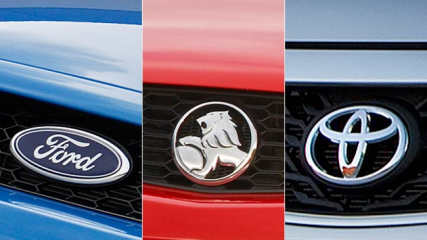
Best big Aussie car
Read the article
By Paul Gover · 04 Aug 2011
Rating the big three Aussies comes down so much to personal preferences. And those preferences could be based on anything from the shape of the driver's seat to the boot size or the fuel economy. And there is always the rivalry in the 'rust belt' - as Toyota calls it - between old-time favourites from Ford and Holden.All three locals are close in most ways and Australians are massively spoiled for choice, as well as value, in cars which are so big they are heading inevitably towards extinction. Then again, American cops are only just learning to love the Commodore-based Caprice ...FORD FALCON XR6There is nothing as homegrown as the punch from the Falcon's big six away from the lights, and that same engine-room strength makes the XR6 a fun car on a twisty road. You can cruise it or push it without every worrying. You also feel the same deep-down muscularity of the Falcon package every time you drive, although - for me - the car is a bit more boofy than the Holden. And, on the negatives, I've never felt as comfortable in the Ford because of its higher-set driver's seat. Ford has an update coming and I've yet to drive the new LPi car, but for me it's a close second.HOLDEN COMMODORE SV6 The Holden is a sharper package than the Ford, a little sweeter in most areas from the steering feel to the operation of the transmission. It turns a little nicer and is a tad more enjoyable on a long freeway run. Commodore buyers also get the advantage of the latest cabin update and a very impressive infotainment system, after dramas with the previous package, and the showroom impact from the driver's seat is probably winning sales. It doesn't feel as strong in a straight line, and it doesn't have Ford's latest capped-price servicing deal, but it's my personal choice.TOYOTA AURION This car is efficient and effective, but it's the transport choice and not for people who enjoy driving. I also wonder how the Aurion V6 can be classified as a large car when the Camry, which is identical apart from a four-cylinder engine, manages to run as the best selling medium-class car ... The Aurion has a giant boot, impressive quality, good fuel economy and is quiet on a trip, but it's bland and that is bad when the other locals have so much personality and punch.

Running costs for 600 cars
Read the article
By David Fitzsimons · 01 Jul 2010
A survey of car running costs for more than 600 popular models, to be released today by the NRMA, shows that motorists are saving $2 a week on the overall costs of running a car compared to last year. It now costs motorists an average of $183 a week to buy, fuel, repair, insure, and allow for car maintenance costs,




